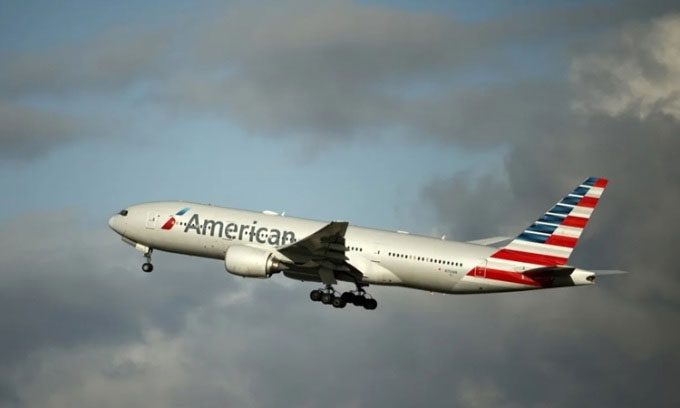The jet stream blowing across the Atlantic Ocean is so strong that flights from the U.S. to Europe are achieving speeds equivalent to the speed of sound.
Sound travels at a speed of approximately 1,225 km/h in “standard conditions at sea level”, according to NASA. Passenger planes flying east from the U.S. over the Atlantic in the past 24 hours have reached speeds of up to 1,252 km/h, which is 322 km/h faster than usual cruising speeds, as reported by CNN. While this is remarkably fast, these commercial flights have not yet broken the sound barrier.

American Airlines Boeing 777 reduced flight time by nearly an hour after flying at a speed of 1,252 km/h thanks to the jet stream. (Photo: Sarah Meyssonnier/Reuters)
Nonetheless, flight times have decreased significantly. Emirates flight 222 from Dallas to Dubai arrived 57 minutes early on November 1, reaching a maximum speed of 1,250 km/h off the coast of Newfoundland, according to flight tracking website Flightaware. American Airlines flight 106 from John F. Kennedy Airport in the U.S. to Heathrow Airport in the UK arrived 54 minutes early that same morning, with a flight time of just 6 hours and 7 minutes. This flight also reached a maximum speed of 1,252 km/h over Newfoundland. Meanwhile, Delta flight 186 from Los Angeles to London flew at a maximum speed of 1,223 km/h, arriving half an hour early on November 1.
The jet stream is described as “a core of strong winds at an altitude of about 8 to 11 km above the Earth’s surface, blowing from west to east”, according to the UK’s Met Office. This is why eastbound flights are often shorter than westbound flights, with long-haul flights typically experiencing time differences of an hour or more, depending on the direction of travel. Aircraft at cruising altitude easily enter the jet stream. The cold weather at the beginning of the week also contributed to the faster winds, according to meteorologist Sara Tonks.
“The cold air mass in the U.S. at the beginning of the week increased the temperature difference between the U.S. and the Atlantic. This temperature difference accelerates the speed of the jet stream. The jet stream will help intensify Storm Ciaran, a low-pressure air mass, and a potential bomb cyclone making landfall in Europe,” Tonks stated.
Previously, in February 2019, a Virgin Atlantic flight flew at a speed of 1,289 km/h from Los Angeles to London, achieving a maximum speed above Pennsylvania thanks to a 322 km/h jet stream. This record was broken the following year by a British Airways Boeing 747, which reached 1,328 km/h on its flight from New York to London, reducing travel time from about 7 hours to under 5 hours.




















































